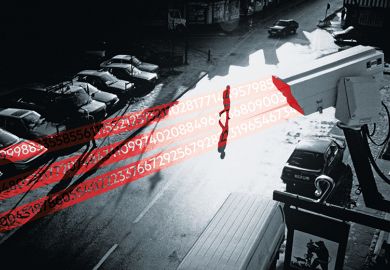The Royal Society’s youngest living fellow hopes that a new centre for mathematical research, which he will direct in his native Australia, will spawn an ecosystem capable of luring other leading lights back home.
Geordie Williamson said that the Sydney Mathematical Research Institute, based at the University of Sydney, had been modelled on the Institute for Advanced Study at Princeton – the “oldest such institute in the world”, founded in 1930. It originated on a happenstance after its philanthropic backers made “a very fortuitous withdrawal from the stock market just before it crashed”.
But Professor Williamson said that a better model for his institute was the Max Planck Institute for Mathematics in the former West German capital of Bonn. Its founder Friedrich Hirzebruch, who had been a member of the Institute for Advanced Study, returned to his native Germany in 1954 in an act of “intellectual suicide”.
“Bonn was a complete backwater at that stage,” Professor Williamson said. “Mathematics in Germany had been destroyed after the Second World War. He moved back and very slowly, over 50 years, transformed Bonn into one of the leading places in the world to do mathematics research.”
Professor Williamson was recognised by the Royal Society for his contribution to representation theory, and elected to the ancient body this year at the age of 36. “This new institute will be a place where the very best can engage in deep science on some of the most fundamental questions facing mathematicians,” he said.
“The institute will be a resource for all Australian universities. Our vision is to ensure it plays a leading role in transforming the cultural status of mathematical sciences in Australia.”
Addressing journalists ahead of the institute’s launch on 12 November, Professor Williamson said that two ingredients were needed to achieve groundbreaking research in mathematics.
“The first is an enormous amount of time,” he said. “The best mathematicians of the world spend their entire lives thinking about two problems. The other thing you need is an ecosystem of ideas.”
He told Times Higher Education that money alone was not enough to entice mathematicians of the calibre of Stanford University maths professor Akshay Venkatesh, who was named Australia’s second Fields medallist in August, back to his native country.
“You can’t go to someone like that and say, ‘we’ll give you some enormous salary, will you come back?’ They just won’t. You need people for them to talk to. They need to feel comfortable there. It’s a really long process.”
The institute has selected its first 19 visiting fellows from eight countries. They will be hosted by 11 Australian universities and will grapple with questions that are “difficult to describe at a press conference”, Professor Williamson said.
Jacqui Ramagge, head of the School of Mathematics and Statistics at the University of Sydney, said that the institute’s impact would take shape over the “very long term”.
“Eighty per cent of your impact is going to come from 20 per cent of your work,” she said. “But you don’t know beforehand which 20 per cent it’s going to be.”
Professor Ramagge cited a Spanish insult – “you are more useless than a zero on the left” – as a yardstick of the institute’s cultural aspirations. “I’ll know we’ve made it when we have a mathematical insult in Australia,” she said.
Register to continue
Why register?
- Registration is free and only takes a moment
- Once registered, you can read 3 articles a month
- Sign up for our newsletter
Subscribe
Or subscribe for unlimited access to:
- Unlimited access to news, views, insights & reviews
- Digital editions
- Digital access to THE’s university and college rankings analysis
Already registered or a current subscriber?










